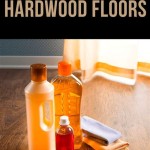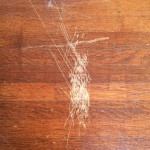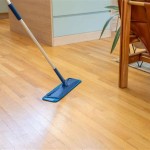Choosing the Right Scrub Brush for Wood Floors: A Comprehensive Guide
Maintaining the beauty and longevity of wood floors requires careful attention, and selecting the right tools is a crucial aspect of this process. Among the various cleaning implements available, the scrub brush stands out as a particularly effective option for deep cleaning and removing stubborn dirt and grime. However, not all scrub brushes are created equal, and using the wrong type can potentially damage the delicate surface of wood. This article aims to provide a comprehensive guide to choosing the appropriate scrub brush for wood floors, outlining the key factors to consider and offering practical advice for achieving optimal cleaning results.
Before delving into the specifics of scrub brush selection, it is essential to understand the nature of wood and the potential risks associated with improper cleaning techniques. Wood, being a natural and porous material, is susceptible to scratching, warping, and discoloration if subjected to harsh chemicals or abrasive tools. Therefore, any cleaning regimen should prioritize gentle yet effective methods, minimizing the risk of damage while ensuring thorough cleanliness. The selection of a suitable scrub brush is paramount in achieving this balance.
Understanding Bristle Material: Natural vs. Synthetic
The bristle material of a scrub brush is arguably the most critical factor to consider for wood floor cleaning. The choice primarily lies between natural and synthetic bristles, each offering distinct advantages and disadvantages. Natural bristles, typically derived from animal sources such as boar or horsehair, are known for their softness and flexibility. These bristles are less likely to scratch or damage wood surfaces, making them a popular choice for delicate floors. However, natural bristles can be more porous than synthetic options, potentially retaining moisture and harboring bacteria if not properly cleaned and dried. They can also be more expensive and might degrade more quickly with repeated use, especially when exposed to harsh cleaning solutions.
Synthetic bristles, on the other hand, are usually made from nylon, polypropylene, or other plastic polymers. These materials are generally more durable, resistant to chemicals, and less prone to harboring bacteria. Synthetic bristles can be engineered to achieve varying degrees of stiffness, allowing for a wider range of cleaning applications. However, it is crucial to select a synthetic bristle brush specifically designed for wood floors, as overly stiff bristles can cause scratches and damage the finish. When choosing a synthetic option, look for brushes labeled as "soft" or "gentle" on wood floors.
Ultimately, the best bristle material for a scrub brush depends on the specific type of wood flooring and the severity of the cleaning task. For delicate or antique wood floors, a natural bristle brush is often the safest choice. For more durable wood floors or for tackling heavily soiled areas, a soft synthetic bristle brush may be more effective. Regardless of the material chosen, it is imperative to test the brush on a small, inconspicuous area of the floor before proceeding with a full cleaning.
Beyond the material itself, the density and arrangement of the bristles play a significant role in the brush's effectiveness. A brush with densely packed bristles will provide greater surface contact and cleaning power, while a brush with sparsely arranged bristles may be less effective at removing stubborn dirt. The arrangement of the bristles can also impact the brush's ability to reach into grooves and crevices in the floor.
Brush Head Design: Shape and Size Considerations
The shape and size of the scrub brush head are important considerations, as they directly affect the brush's maneuverability and ability to access different areas of the floor. Scrub brushes are available in a variety of shapes, including rectangular, round, and triangular. Rectangular brushes are generally the most versatile, offering a large surface area for cleaning and allowing for efficient coverage of open spaces. Round brushes are often preferred for cleaning corners and edges, as their shape allows them to easily reach into tight spaces. Triangular brushes are specifically designed for cleaning corners and grout lines.
The size of the brush head should be appropriate for the size of the area being cleaned. A larger brush head will allow for faster cleaning of large open spaces, while a smaller brush head will be more suitable for cleaning smaller areas or tight corners. It is also important to consider the brush's weight and balance, as a heavy or unwieldy brush can be difficult to maneuver and may cause fatigue during prolonged cleaning sessions.
Some scrub brushes feature pivoting heads, which allow the brush to swivel and adjust to different angles. This feature can be particularly useful for cleaning under furniture or in other hard-to-reach areas. Other brushes feature telescoping handles, which allow the user to adjust the length of the handle for greater comfort and control. The ideal brush head design will depend on the specific needs of the user and the characteristics of the floor being cleaned.
Beyond the shape and size, the construction of the brush head is an important factor. It is crucial to choose a brush head that is securely attached to the handle, as a loose or wobbly brush head can make cleaning more difficult and may even damage the floor. The brush head should also be made from durable materials that can withstand repeated use and exposure to cleaning solutions. Some brush heads are designed to be replaceable, which can extend the lifespan of the brush and save money in the long run.
Ergonomics and Handle Considerations: Comfort and Control
While the bristle material and brush head design are undoubtedly important, the ergonomics and handle design of a scrub brush should not be overlooked. A comfortable and well-designed handle can significantly improve the cleaning experience, reducing fatigue and maximizing control. Scrub brushes are available with a variety of handle materials, including wood, plastic, and metal. Wooden handles offer a classic look and feel, but they can be susceptible to moisture damage if not properly cared for. Plastic handles are generally more durable and resistant to moisture, but they may not be as comfortable to grip. Metal handles are the most durable option, but they can be heavy and may become slippery when wet.
The shape and length of the handle are also important considerations. A handle that is too short may require the user to bend over excessively, leading to back pain and fatigue. A handle that is too long may be difficult to control. The ideal handle length will depend on the user's height and the type of cleaning being performed. Some handles feature ergonomic grips, which are designed to fit comfortably in the hand and reduce strain on the wrists and hands. These grips can be particularly beneficial for users who suffer from arthritis or other hand conditions.
The angle of the handle relative to the brush head is another factor to consider. A handle that is angled properly can help to improve the user's posture and reduce strain on the back. Some scrub brushes feature adjustable handles, which allow the user to customize the angle to their liking. It is important to choose a scrub brush with a handle that feels comfortable and allows for easy and efficient cleaning.
In addition to the handle itself, the overall balance and weight of the brush are important considerations. A well-balanced brush will be easier to control and maneuver, while a lightweight brush will reduce fatigue during prolonged cleaning sessions. It is important to test the brush in hand before purchasing it to ensure that it feels comfortable and balanced.
Beyond the scrub brush itself, it's crucial to employ proper cleaning techniques to safeguard wood floors. Using a pH-neutral cleaner specifically designed for wood floors is essential. Applying excessive water should be avoided, as it can seep into the wood and cause warping or damage. Instead, the scrub brush should be used with a damp, not soaking wet, cloth or mop. Consistent cleaning and maintenance, including regular sweeping or vacuuming to remove loose debris, will minimize the need for aggressive scrubbing and prolong the life of the wood floor.
By carefully considering the bristle material, brush head design, and ergonomics of a scrub brush, coupled with appropriate cleaning practices, homeowners can effectively maintain the beauty and integrity of their wood floors for years to come.

Hdx 13 In Pro Deck Scrub Brush 3013 The Home

Carlisle 3619200 10 Wooden Floor Deck Scrub Brush Wasserstrom

Restaurantware Clean Tek Professional 8 Inch Deck Brush 1 Heavy Duty Scrubber Stiff Bristles Ergonomic Handle Wood Cleaning Scrub For Remo

Heavy Duty Rough Surface Floor Brush Stainless Steel Wire Large Deck Scrub Removes Snow Dirt Grime On Drivways Steps Patios Decks Tile

Carlisle 4042100 Flo Pac 10 Hi Lo Floor Scrub Brush With Squeegee

Libman No Knees Floor Scrub Brush With Steel Handle 8 Pack

Kitchen Sisorrs Wood Floor Brush Head Accessories Nylon Bristles Cleaning Patio Broom Bathroom Scrubber Handle

Lavex 10 Red Bi Level Floor Wall Scrub Brush Head

Hand Scrub Brushes Zephyr Manufacturing Co
Dqb 7 3 4 In W 48 Metal Handle Scrub Brush Mfr 11932 Ace Hardware







